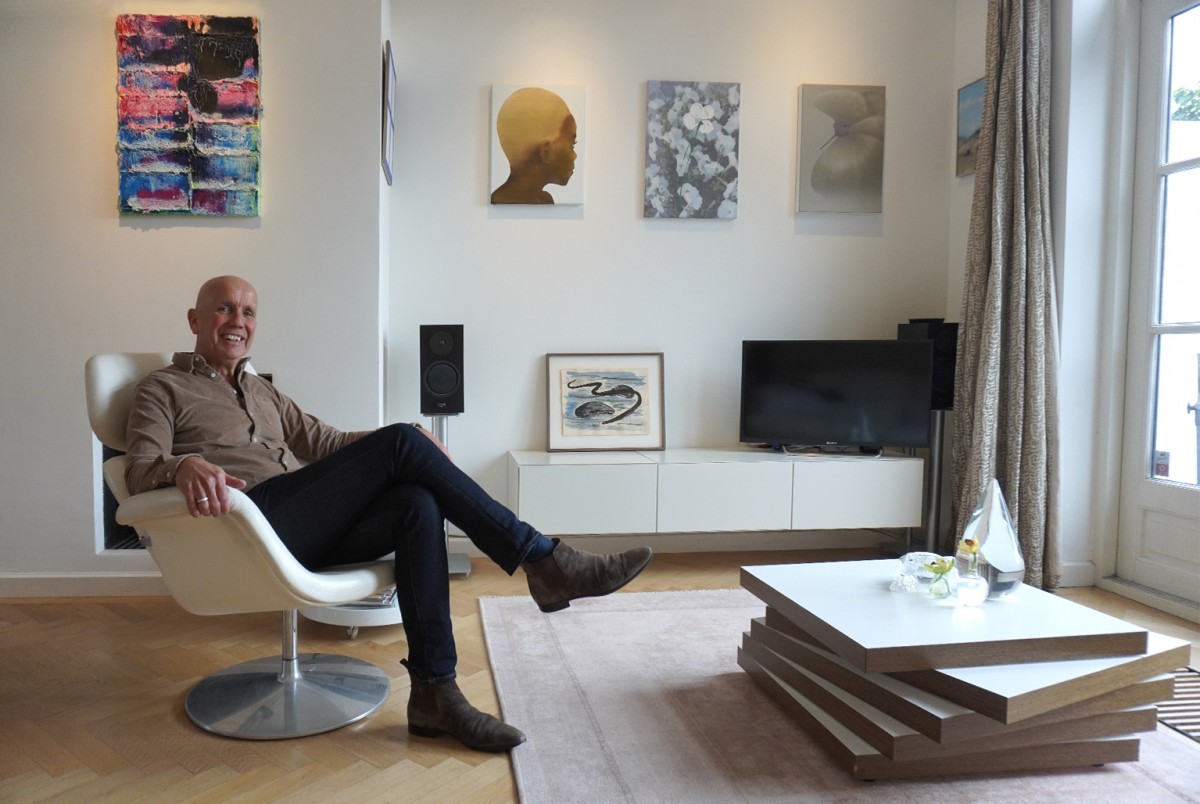“I grew up in the Mediterranean region. Although my parents were interested in beautiful things, they had little interest in contemporary art. We mainly went to visit Greek and Roman sites. Perhaps because of this, I am fascinated by that famous human measure, the golden ratio. It taught me what beauty is. To me, beauty is 'nature made by man'.
My curiosity about modern art was sparked when I spotted a book about De Stijl at home. My parents told me it was on the table because it featured my great uncle: Stijl-architect Robert van 't Hoff. I started reading more about it in an effort to understand it, but it didn't really work. That gave me a bit of an inferiority complex when it comes to art. But I’m deeply curious, so I still wanted to know more about it. So I started to buy more books and magazines about art and dared to ask more questions: to gallery owners, artists and tour guides. Eventually, I was able to look at art in a better, more profound way.”
Each work of art tells a story of its own and has something innately beautiful and innovative.
Collection
“I don't really consider myself to be an art collector. Yet I am, because I own a collection of art. I would like to emphasise this fact, because I’m not trying to collect series, as a collector of stamps would. My wife and I have mainly bought Dutch art over the years. That is why we can now show a part of Dutch art history, from after the (Second World) war to the present day. One of our most important criteria is that each work shows a certain innovation that was taking place during that period in time.
It is difficult to determine which work is my favourite because each work of art tells a story of its own and has something innately beautiful and innovative. Our work by Ger van Elk, for example, really appeals to me. It symbolises the artist's struggle with paint as a material. The works of Jan Schoonhoven and Marien Schouten also mean a lot to me. Because I’m a bit of a neat freak and because I love harmony, I have hung all the works in such a way that the line at the top always remains the same. This gives it a museological effect, so that my wife and I always return home with a feeling of joy."
In every good work of art there is something that isn’t visible to the eyes, but but you can still feel it.
Tips & Tricks
“Allow yourself to be seduced by a work that appeals to you and suits both yourself and your interior. Consider your first purchase as part of your interior and then use it as a reference. Think about it when you walk through a museum and compare it to the works there. Think about what makes the works in museums more unique than the work you have at home. Of course, hardly anyone has a budget to buy museum works immediately, but it does teach you to really think about quality.
Ask a lot of (stupid) questions. An inferiority complex like the one I had at the time is not necessary at all. Gallery owners have often studied art history and many people hear their intellectual, academic stories and don’t know what to do with that. Don't be afraid to say: "I don't get it, can you tell it in normal English wording please?” I assure you, they will be glad to help you.
Never forget that an artist continues to produce work. Was the work you had your eyes on your sold at the gallery? Have a bit of patience, there will be another work that really appeals to you so don’t be afraid that you will miss out. Make sure to rethink your normal way of viewing things. Don't look at art the way you look at a car or a bouquet of flowers. Try to understand the message of the work and what the artist is trying to show or tell you. Every good work of art is 50% image and 50% back story. In every good work of art there is something that isn’t visible to the eyes, but but you can still feel it.”
